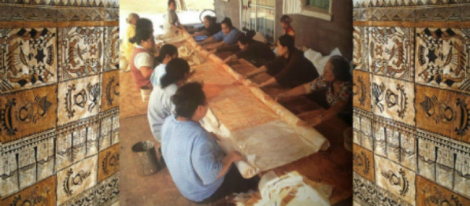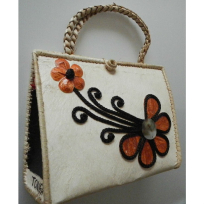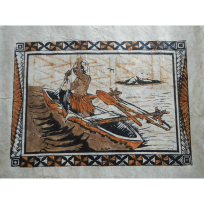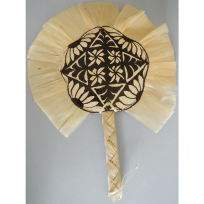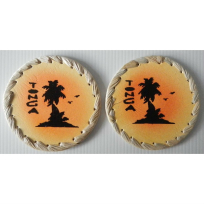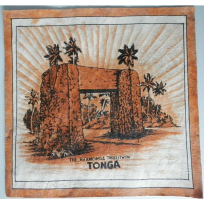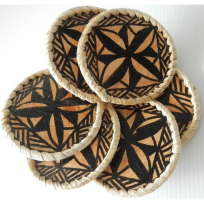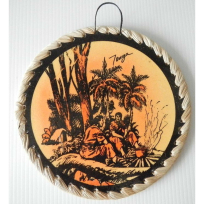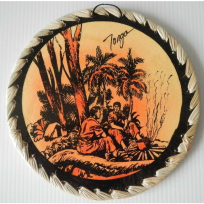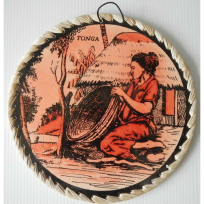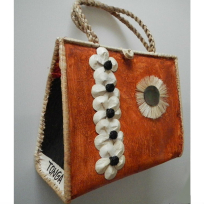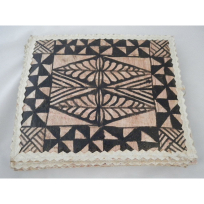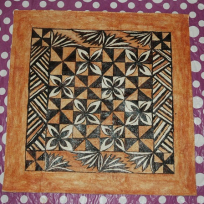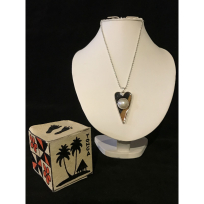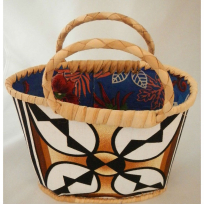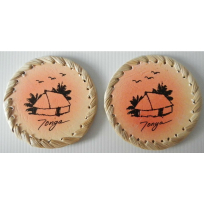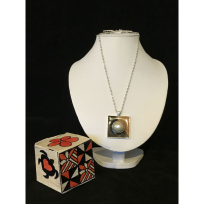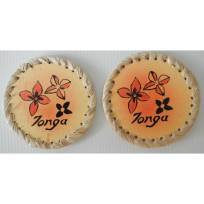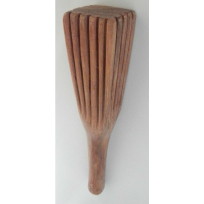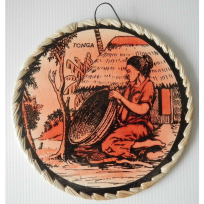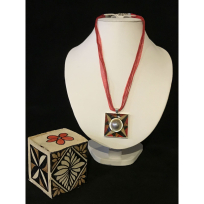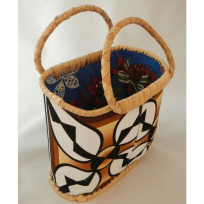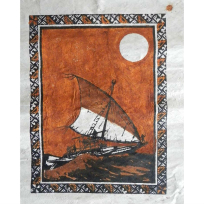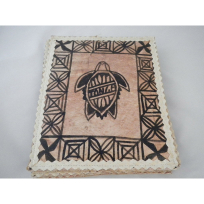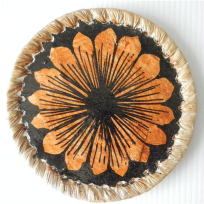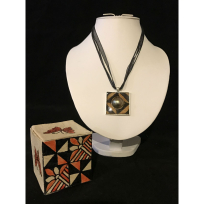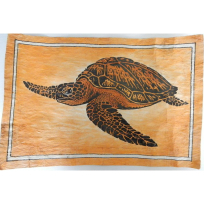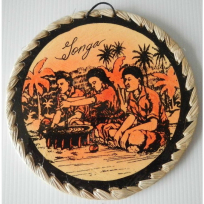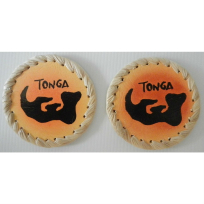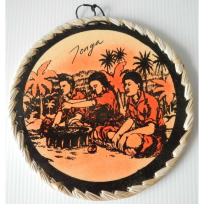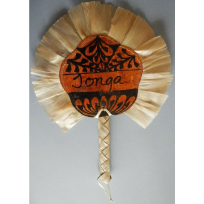Products
Shop Online
Shopping Cart

Shop Online
Ngatu (Tapa)
Ngatu is made from the bark of hiapo (paper mulberry tree). Only men may tend hiapo while it is growing but, once it has been harvested, only women may turn the hiapo bark into ngatu.
The process of making ngatu begins with stripping the bark from the tree and then separating the inner and outer bark. The stripped bark is then cut into strips and beaten - which transforms the strip into a wider piece resembling a fibrous fabric.
When a number of pieces have been produced, they are dried and placed under a mattress to flatten them. A design is imprinted on the cloth with a kupesi (pattern board) and pieces are joined together with a paste made from arrowroot. After the imprinted design has dried, extra decoration is painted on by hand.
Throughout Polynesia, tapa designs greatly impressed early European explorers. When Captain Cook visited Tonga, ngatu was used for many everyday objects including sheets, bedding, and even turbans, capes and kites! The tapa designs have almost disappeared from Polynesia; only in Tonga has the strong tradition remained.
The main social function of ngatu is to be a constantly circulating gift, given at weddings, funerals and other special occasions. Larger pieces of ngatu are considered a symbol of wealth and nowadays at weddings in Tonga, a ngatu will be draped over the wedding car carrying the happy couple.
It is formally traded in a katoanga exchange for pandanus mats plaited by women who live where hiapo does not grow well.
Ngatu also play an important part in funerals. Immediately after someone dies, the body is placed on a bed of ngatu in a room draped with ngatu and mats. The following day the body is wrapped in still more ngatu, carried to the cemetery and lowered into a grave that may be temporarily enclosed by a very long piece of ngatu. As a final touch, another piece of ngatu may be formed into a banner to decorate the grave.
Although ngatu of today do not have the range of colour, grades, pattern types, and uses that existed a century ago, ngatu remain an important part of Tongan culture. The growth of tourism has meant that, today, ngatu are also used as decorative layers on such introduced items as purses, place mats and serving trays.
Click the Read More button below to find out how Ngatu is made
Read More
How Ngatu is made
The 'Ngatu' or 'Tapa' is made from the bark of a mulberry tree known in Tonga as 'hiapo'. After two years, these trees, after having been carefully planted, pruned, and cared for, are cut down, and the bark of each tree is stripped off, being careful not to tear it or make holes during the process. Next, the outer skin of the bark is removed, leaving only the soft white inner bark which is hung to dry in the sun. This is soaked in water overnight before it is ready to be beaten the following day. Each 'tutu', as the bark is now called, is placed on a hard wooden surface, or 'tutua', and is beaten with a wooden mallet, or 'ike' with each woman beating out separate pieces. The mallet is wooden and carved from a piece of the hardwood 'toa' tree (Polynesian ironwood, beefwood or she-oak). The top half of the mallet is square in shape with deep grooves etched on three sides. It then tapers to a round handle and is about 33 cm long. The sound of wooden mallets beating out lengths of tapa cloth is one of the most familiar sounds in Tonga. From early morning until sunset throughout the Island Kingdom, women gather in their homes or at the village communal tapa house, 'fala kautaha', to assist each other in tapa making.
When enough tutu has been beaten to make the required size (lengths of 92 m to 142 m are made for special occasions), the women return home and sleep on the cloth, which is now called 'feta'aki', so as to flatten it and remove all creases. The separate pieces are then squared off, doubled, and stuck together using arrowroot grounded into a paste as an adhesive. The cloth is then ready for the design.
The design starts with a relief of the pattern, called a 'kupesi'. A piece of the base of the young coconut shoot is cut. Ribs of coconut leaves are positioned into the desired design and sewn on the coconut shoot base. The cloth is placed over the kupesi, and a dye of raw koka (red cedar) sap is rubbed on, leaving an impression of the pattern. This dye is a brown colour and is made by squeezing the juice from the shredded bark of the koka tree. There are several types of trees that produce dyes for painting the tapas: Koka (red cedar) , Tongo ta’ane (black mangrove), and Tuitui (candlenut). Traditionally with Tongan handicrafts the dyes are brown, unlike Fiji, which uses black dyes.
The women then finish painting the traditional patterns using brushes made from the seeds of pandanus and natural dyes of either the koka or tongo sap. The effect of different shades of black and brown is achieved by boiling the tongo or koka dyes.



